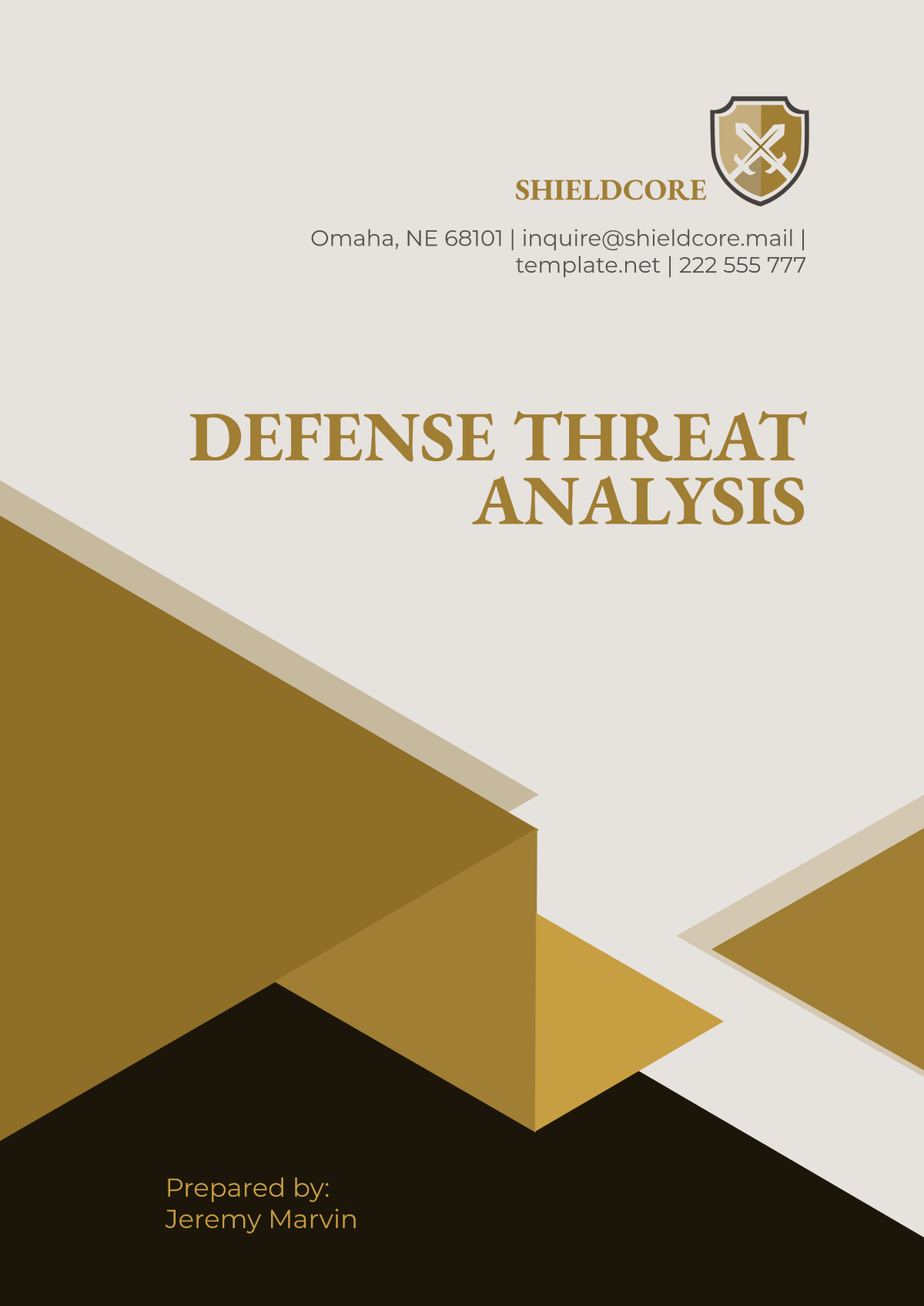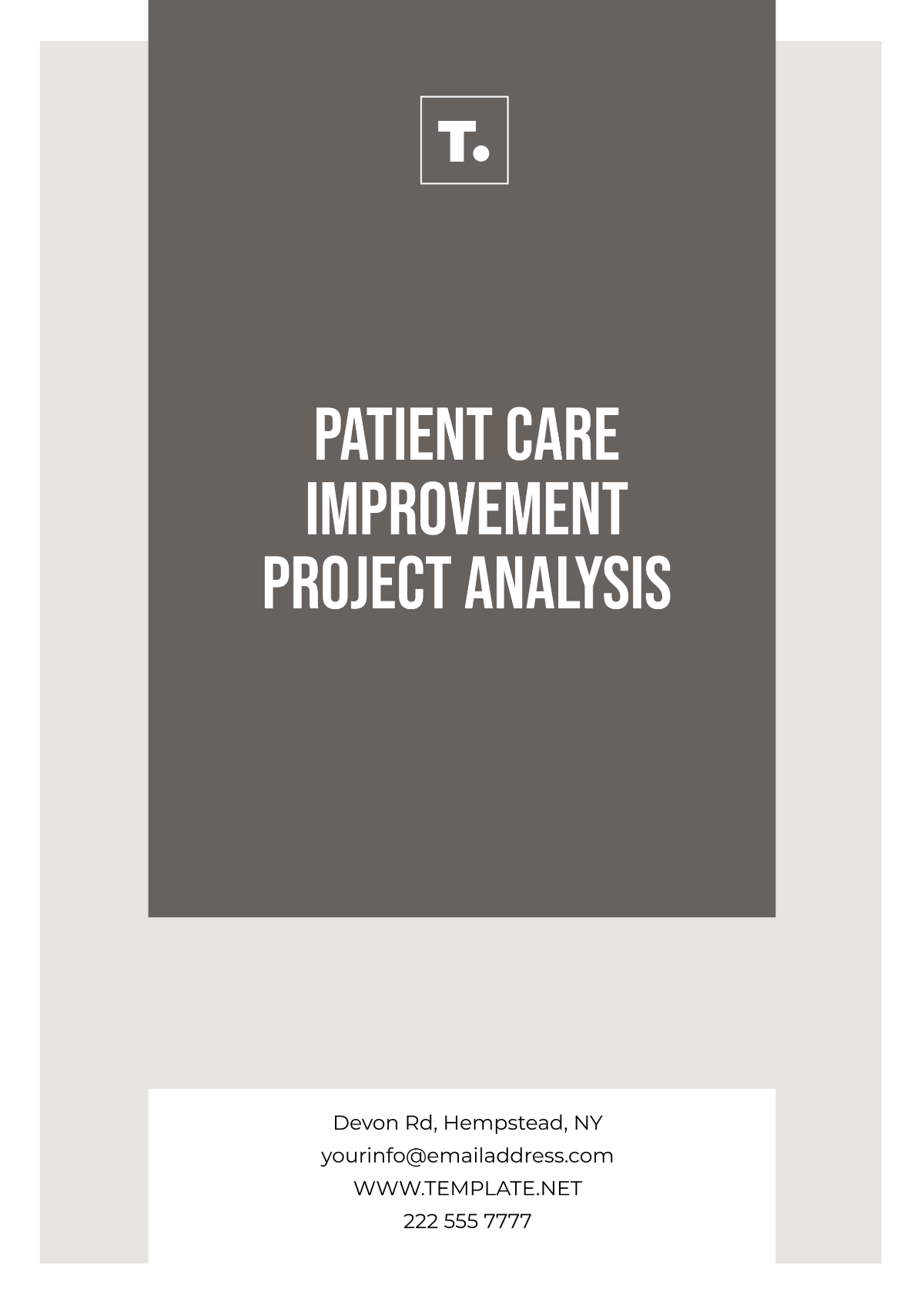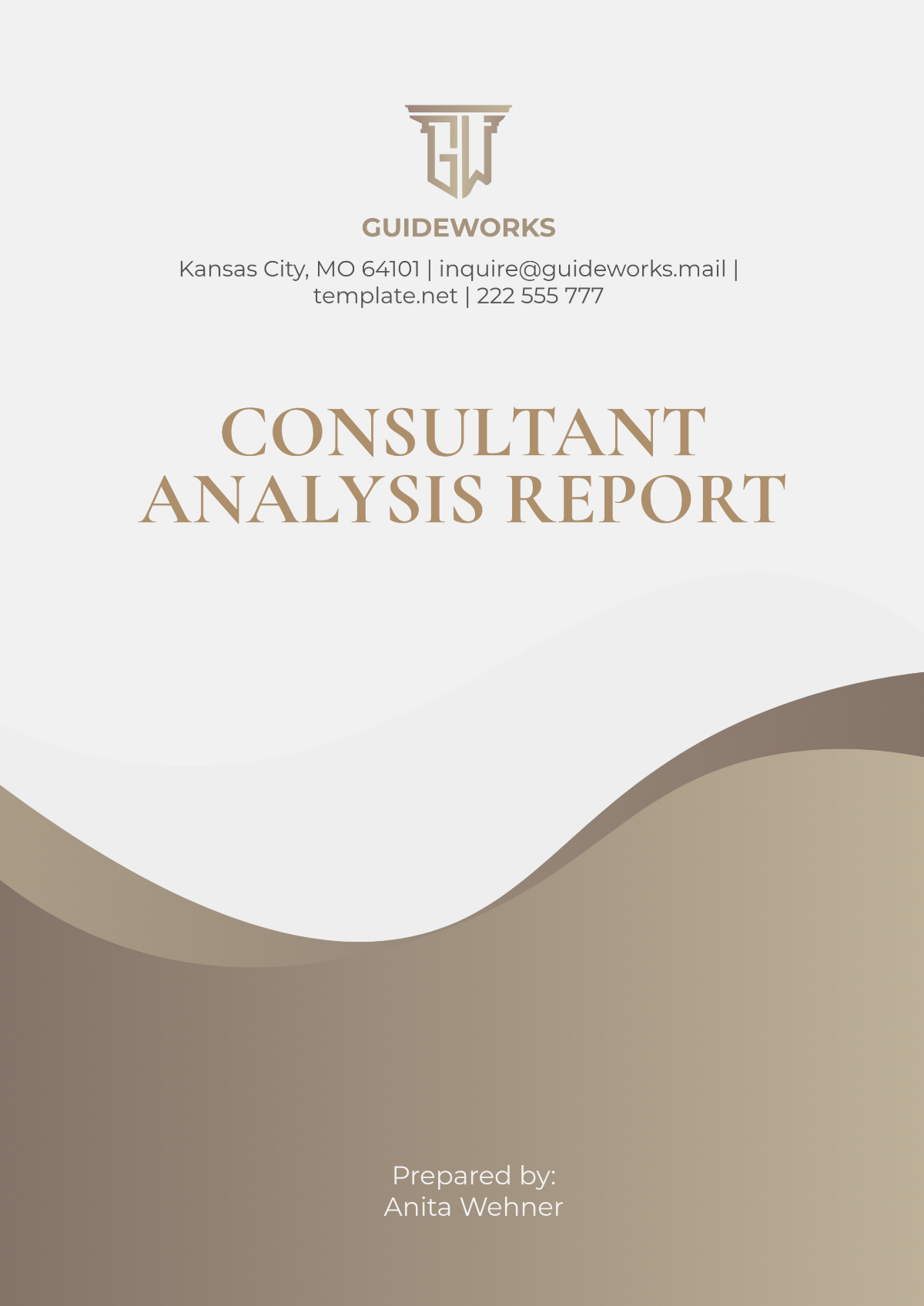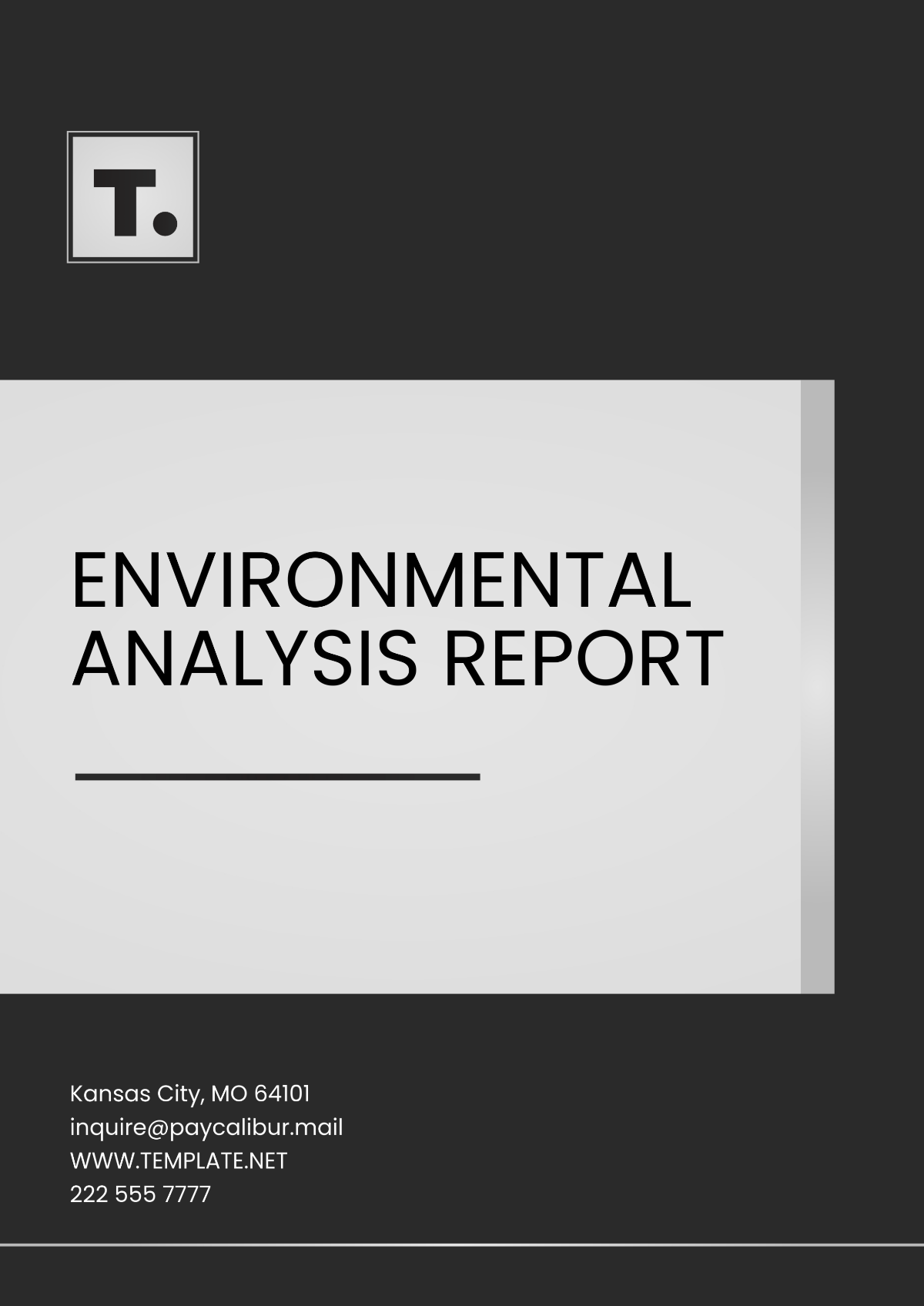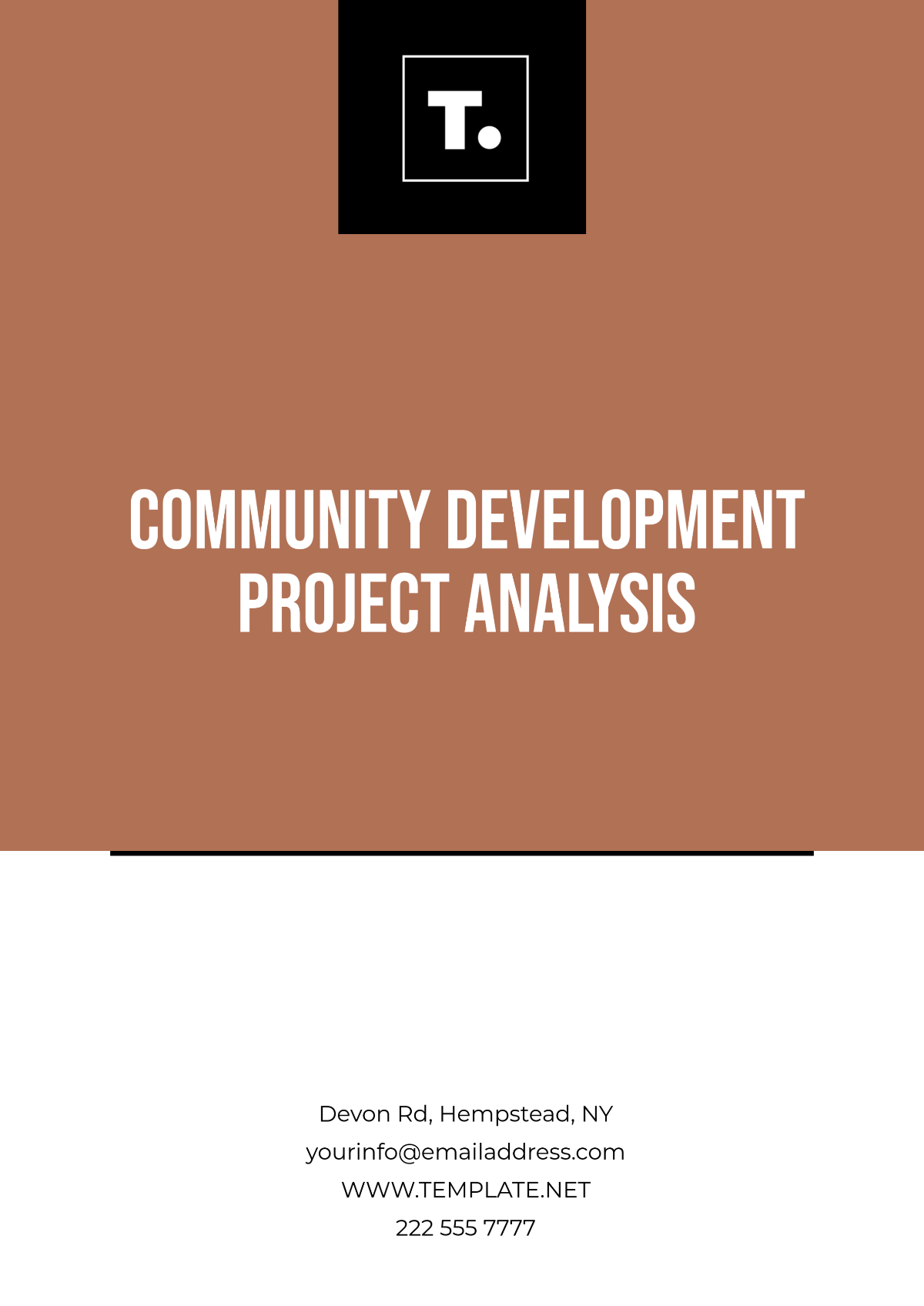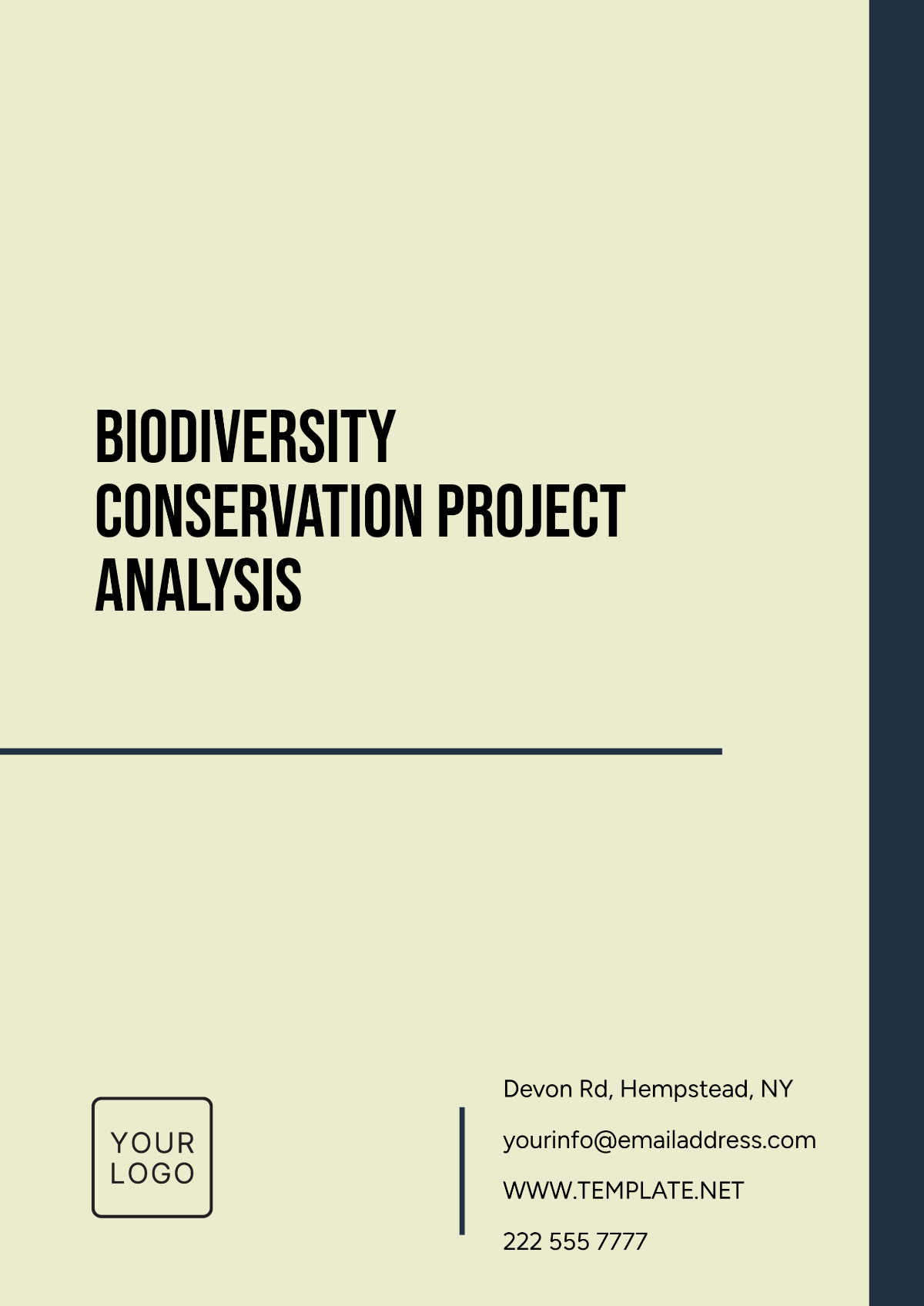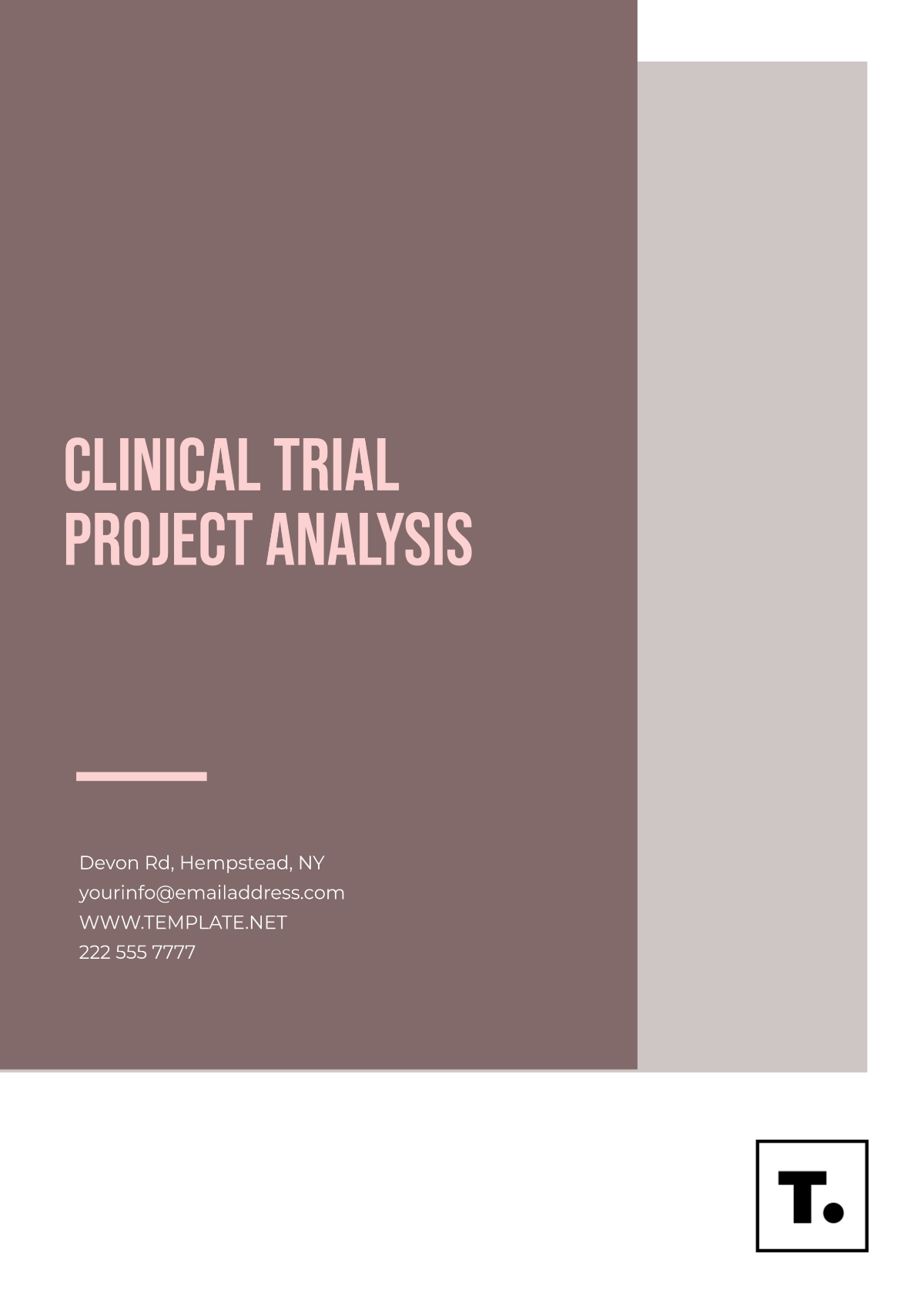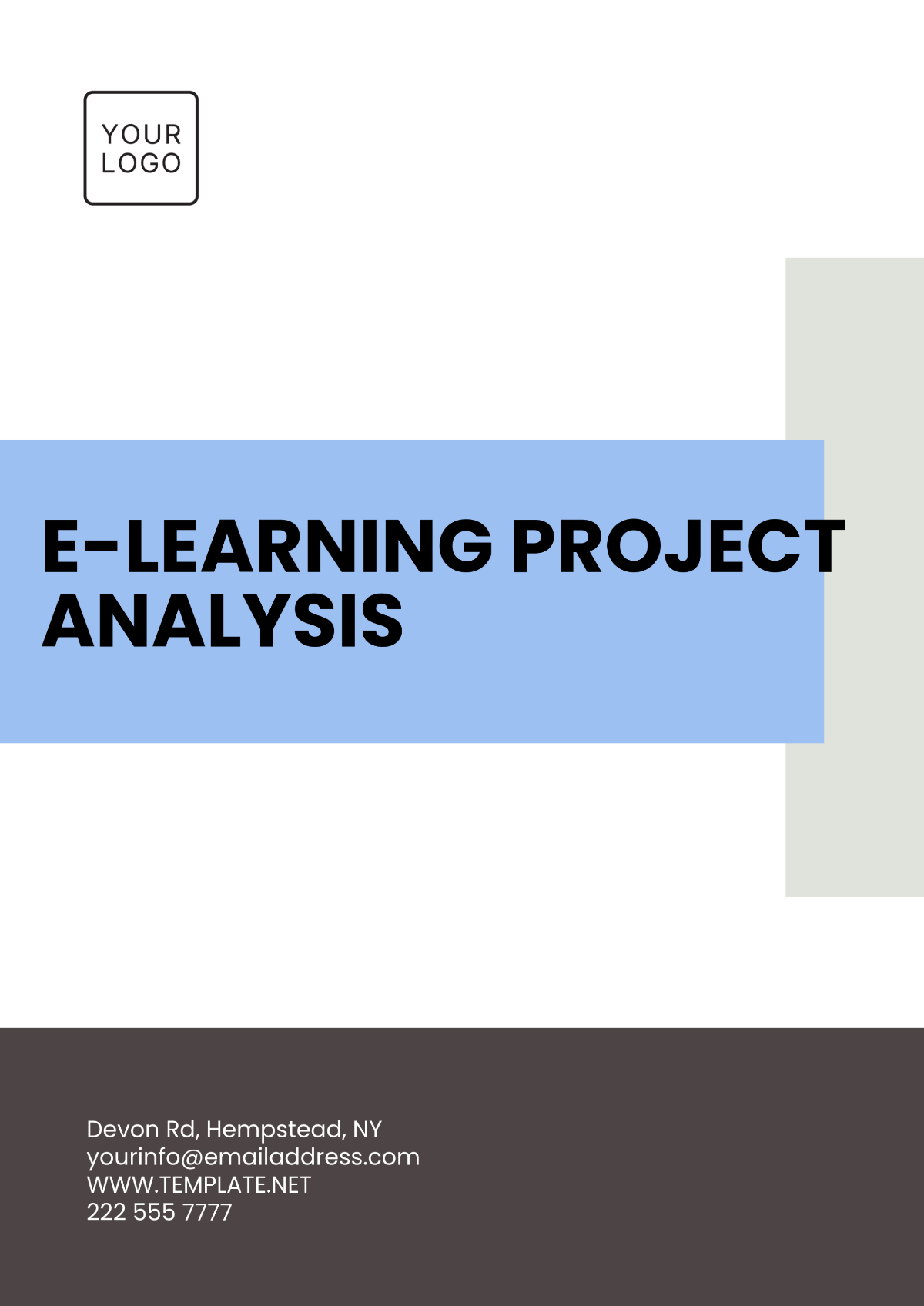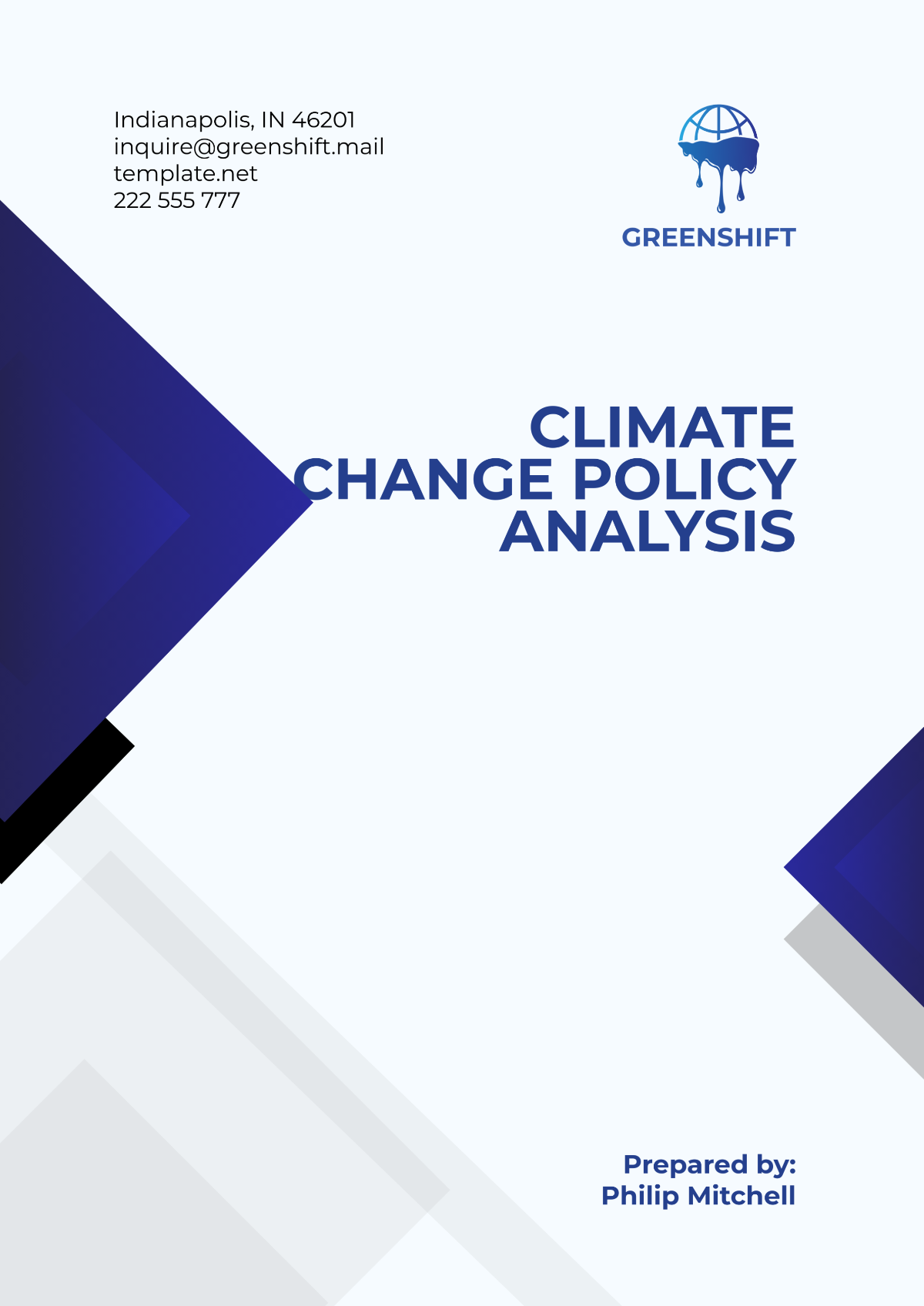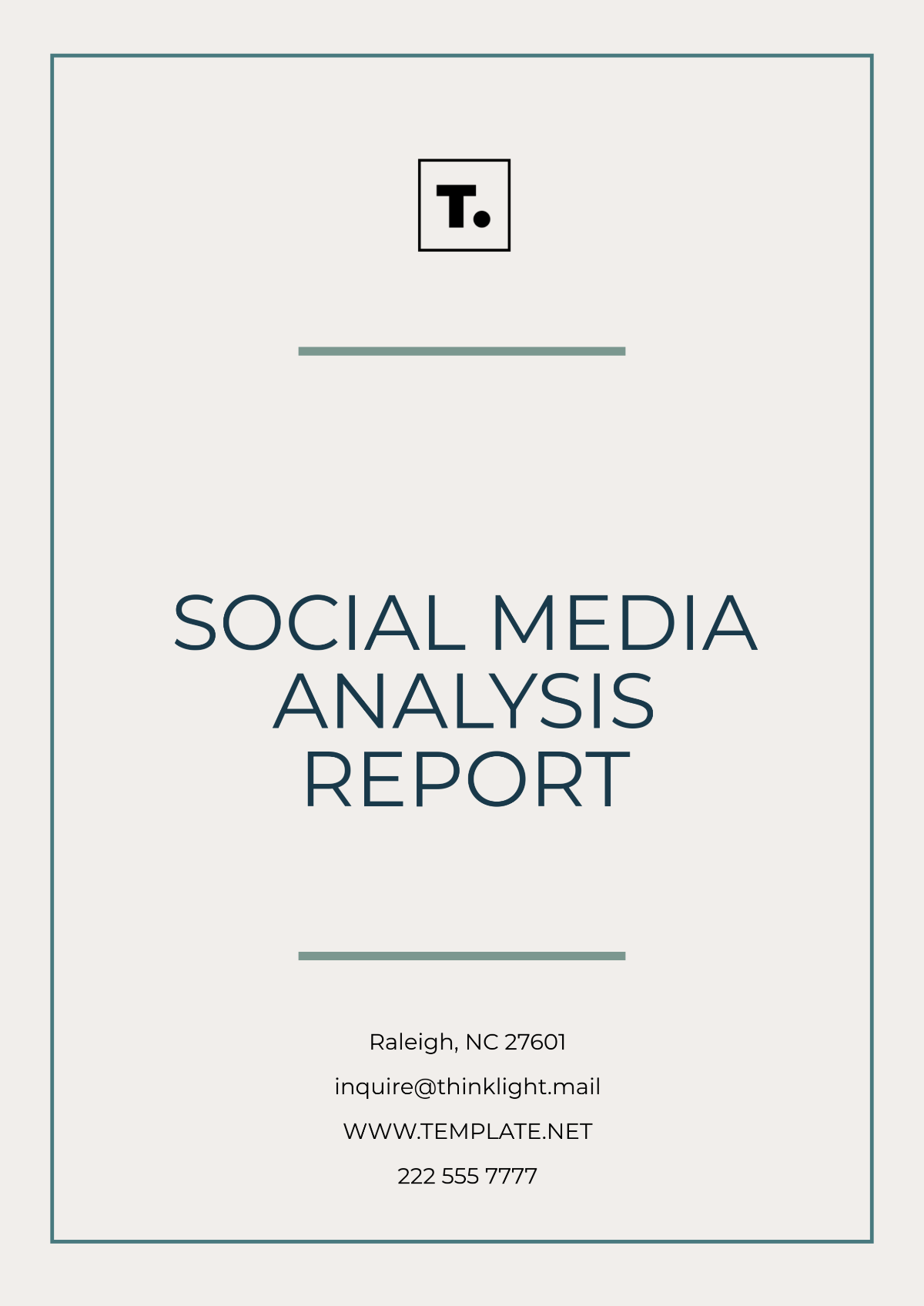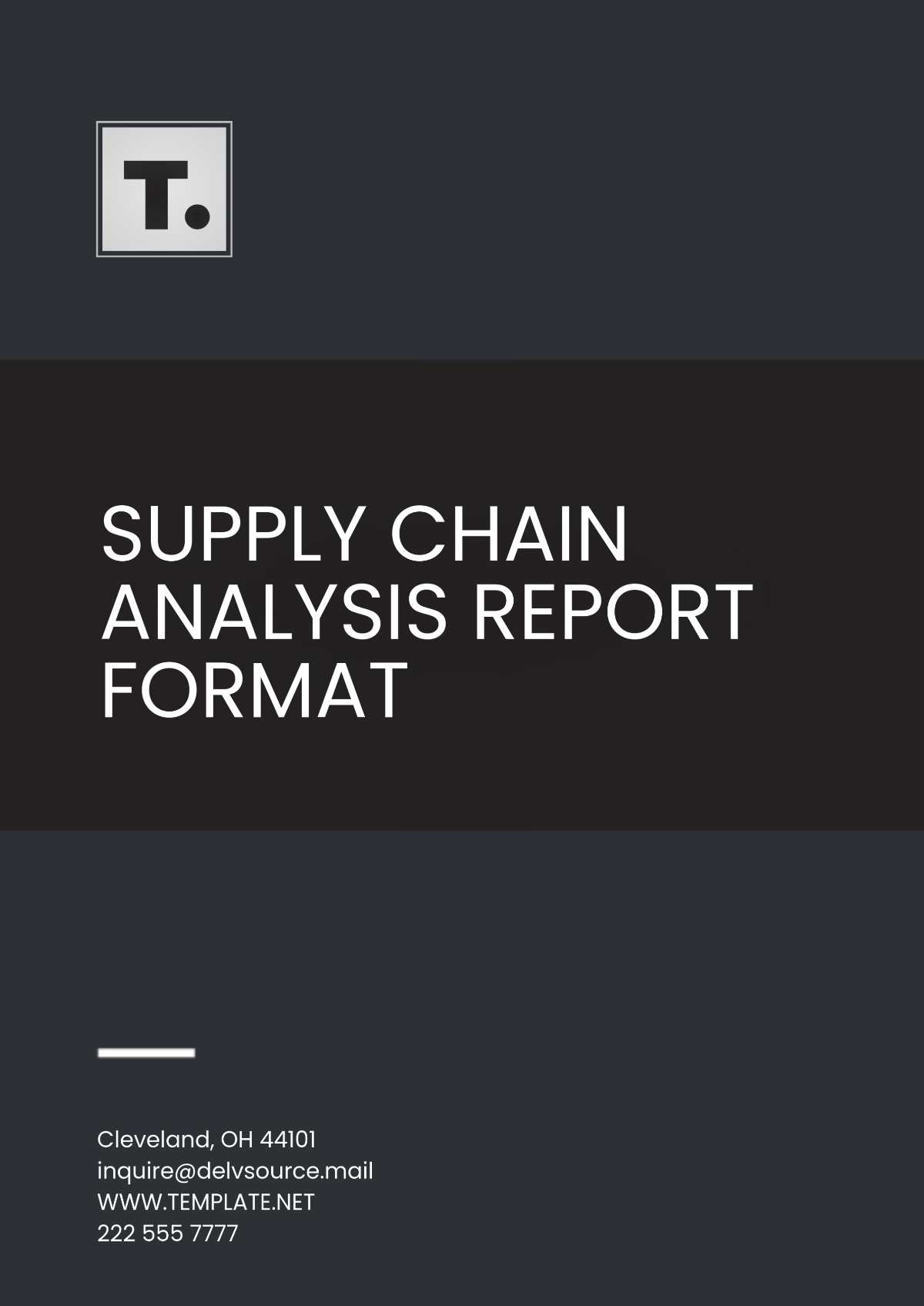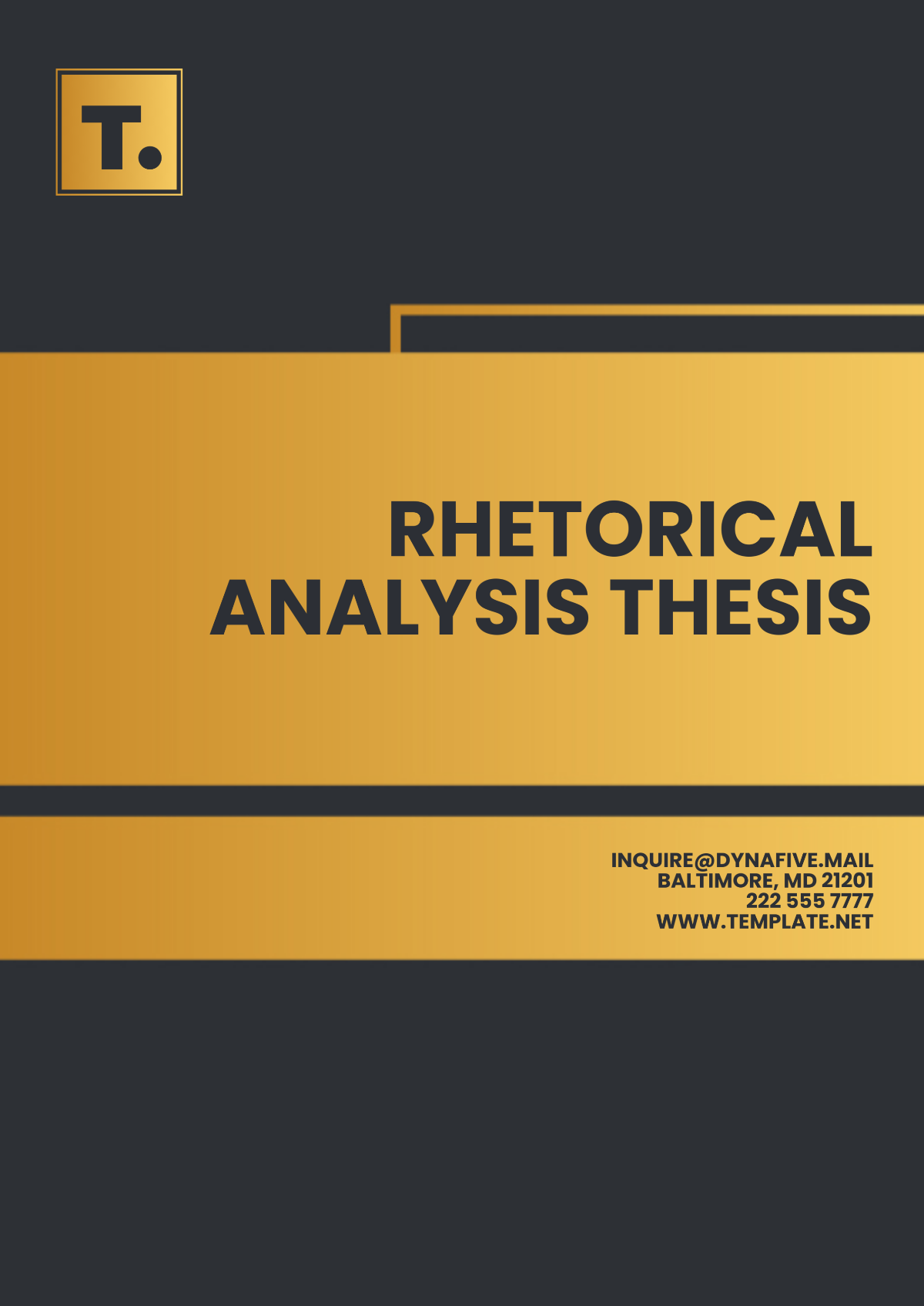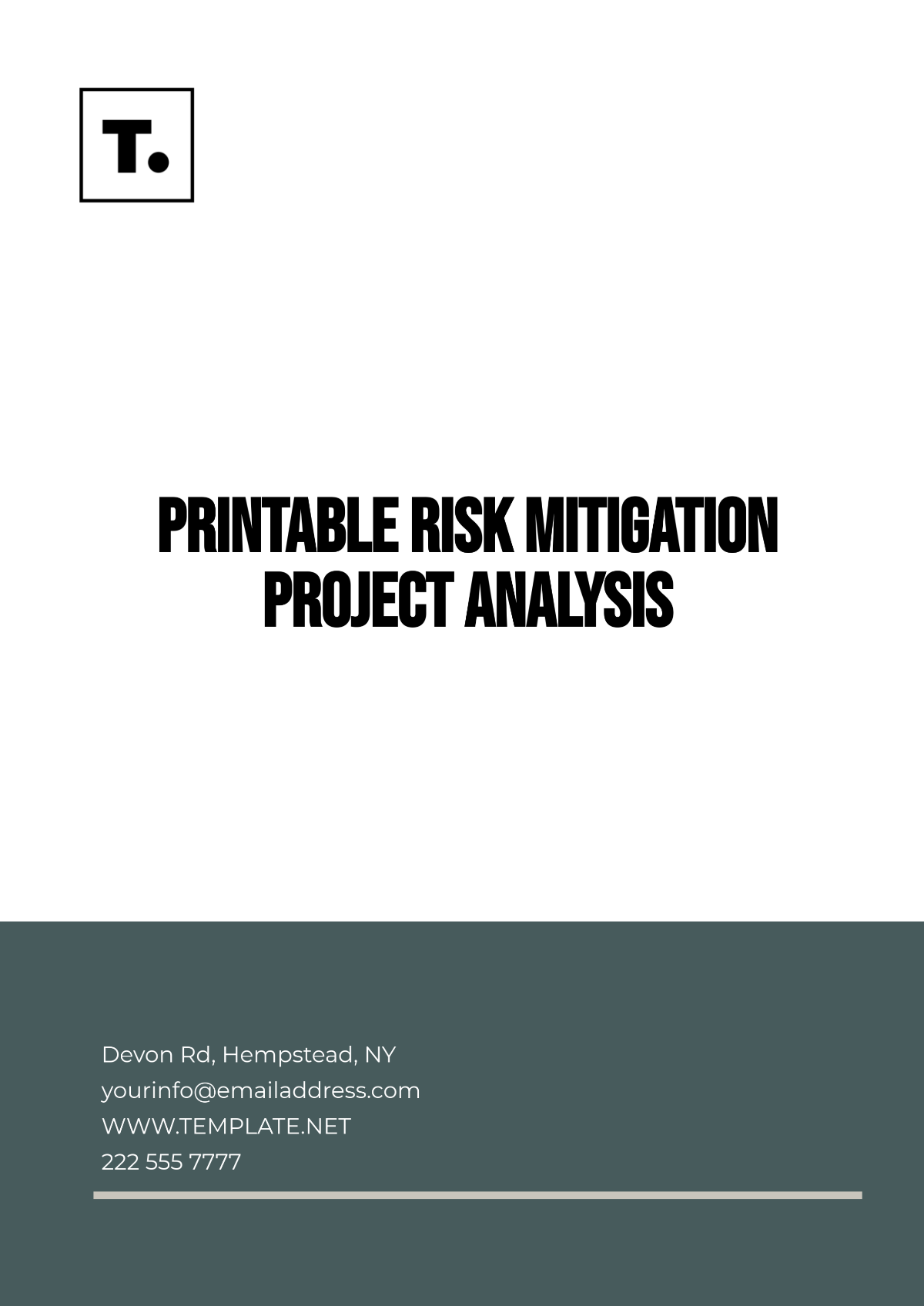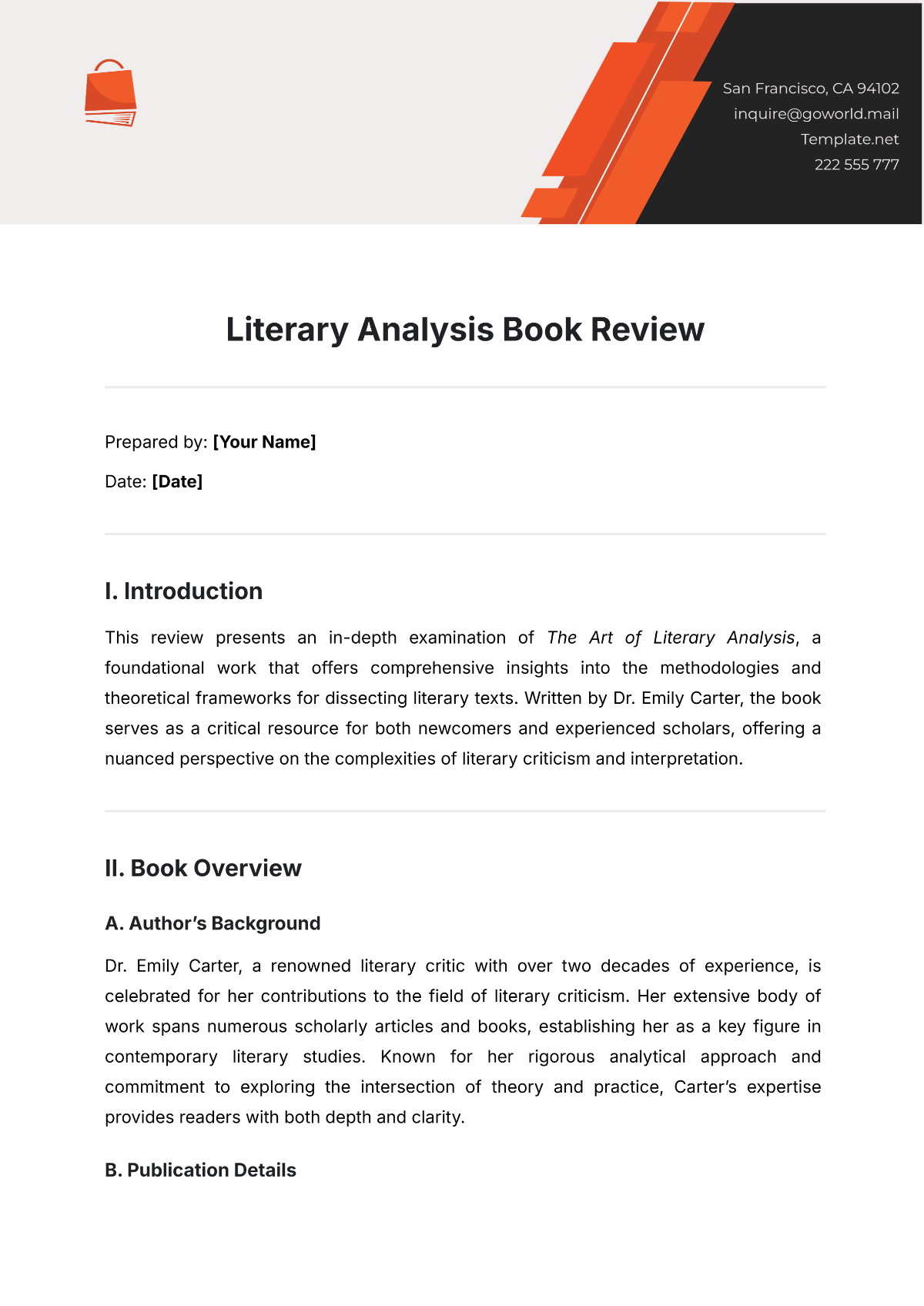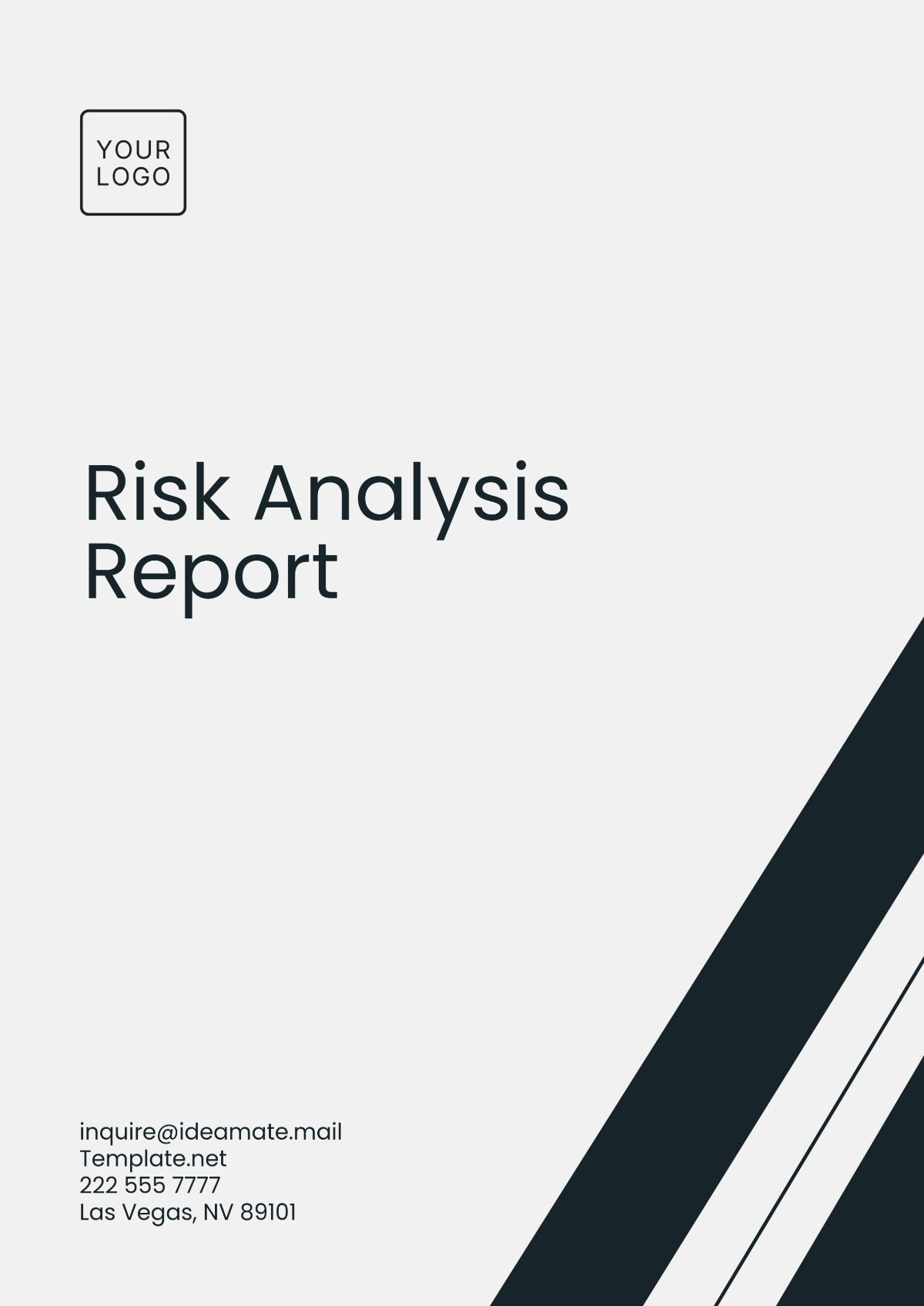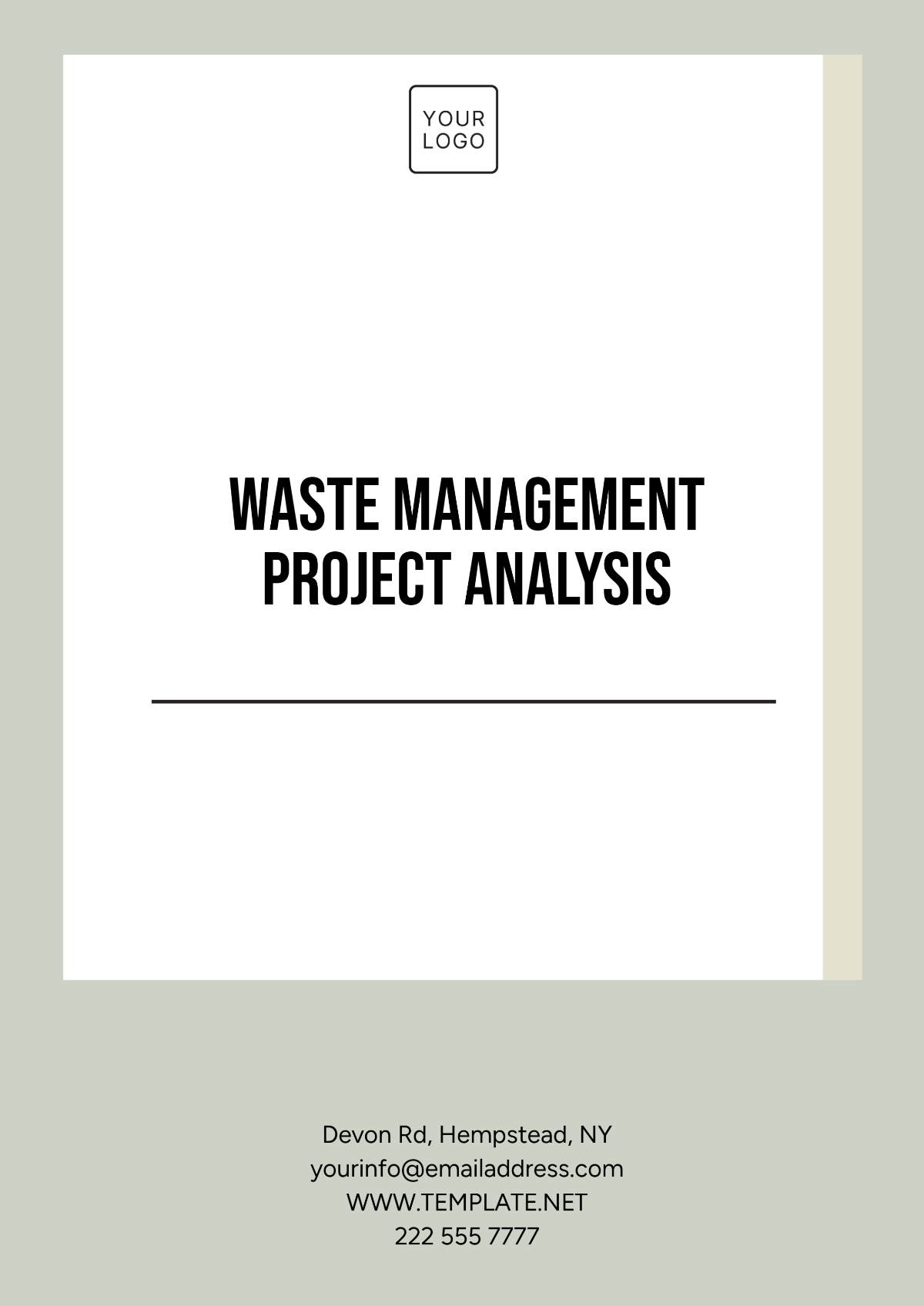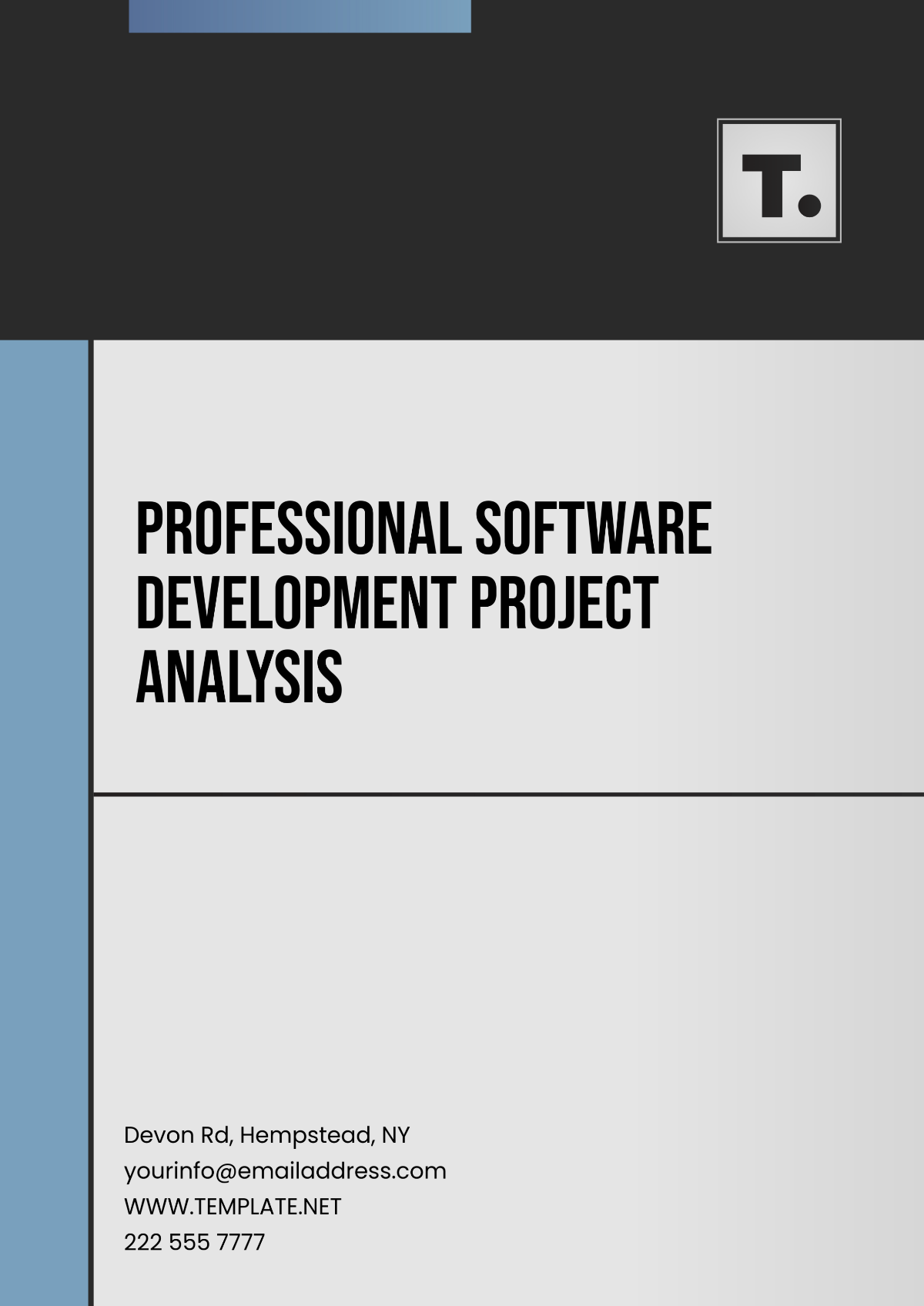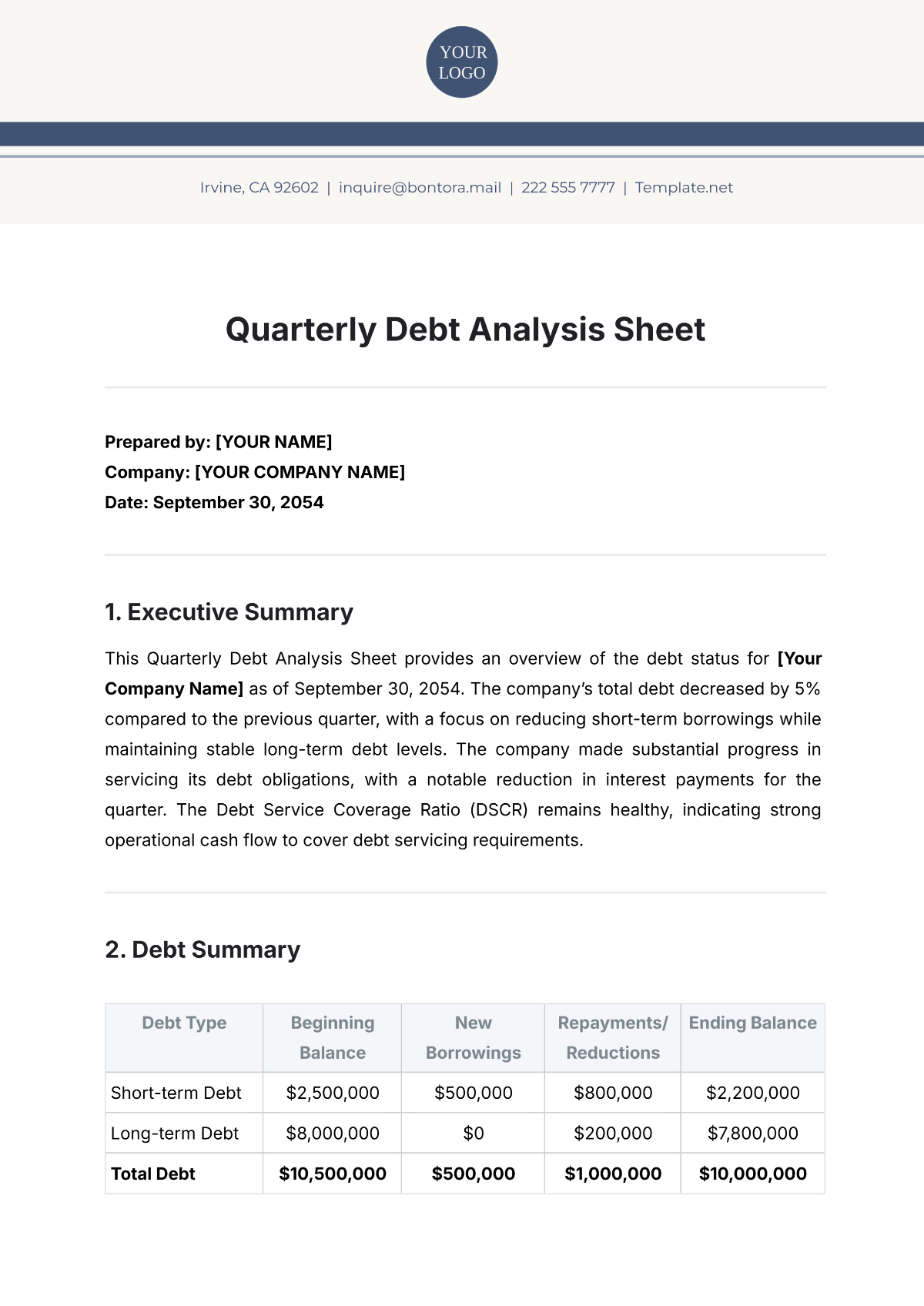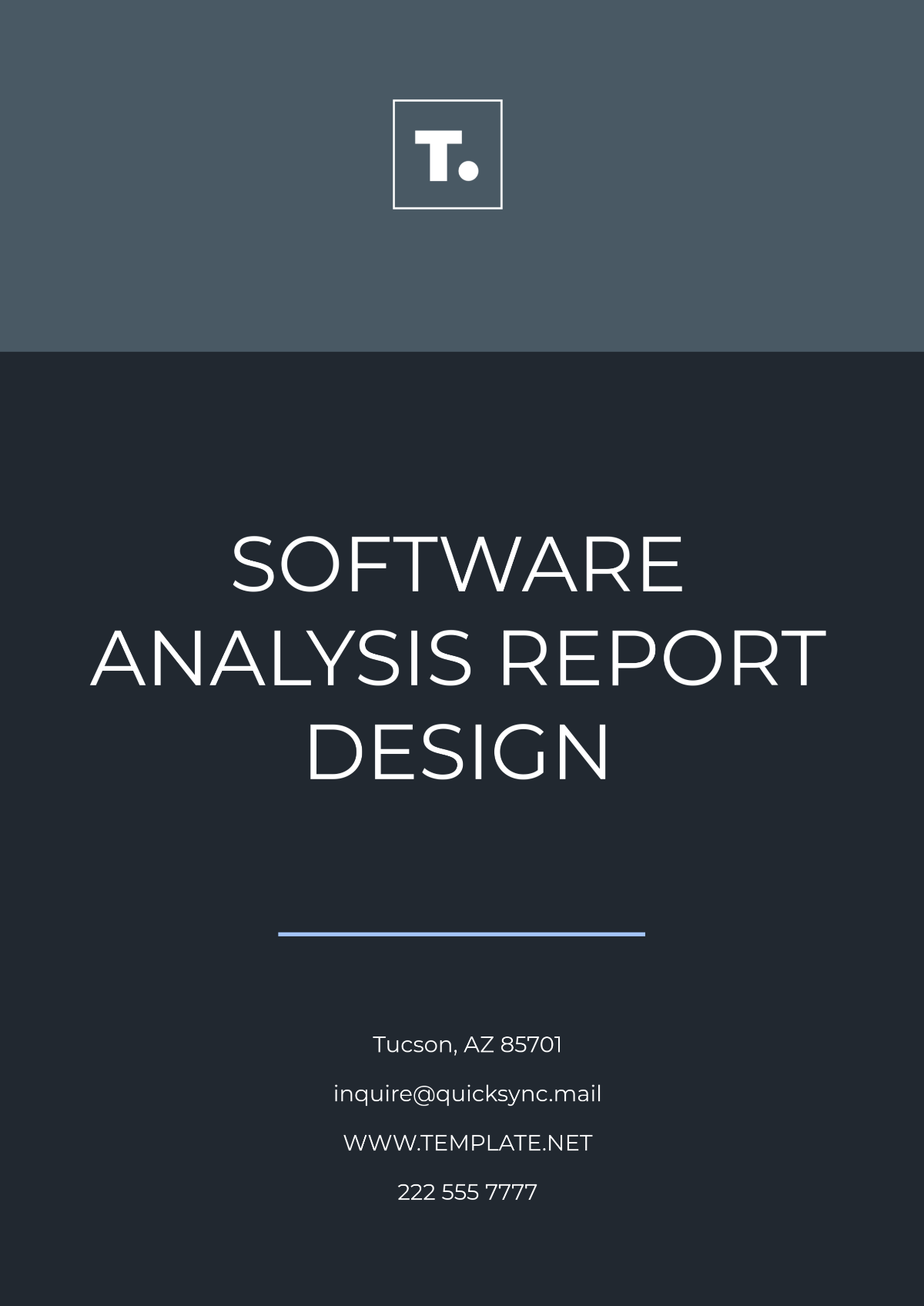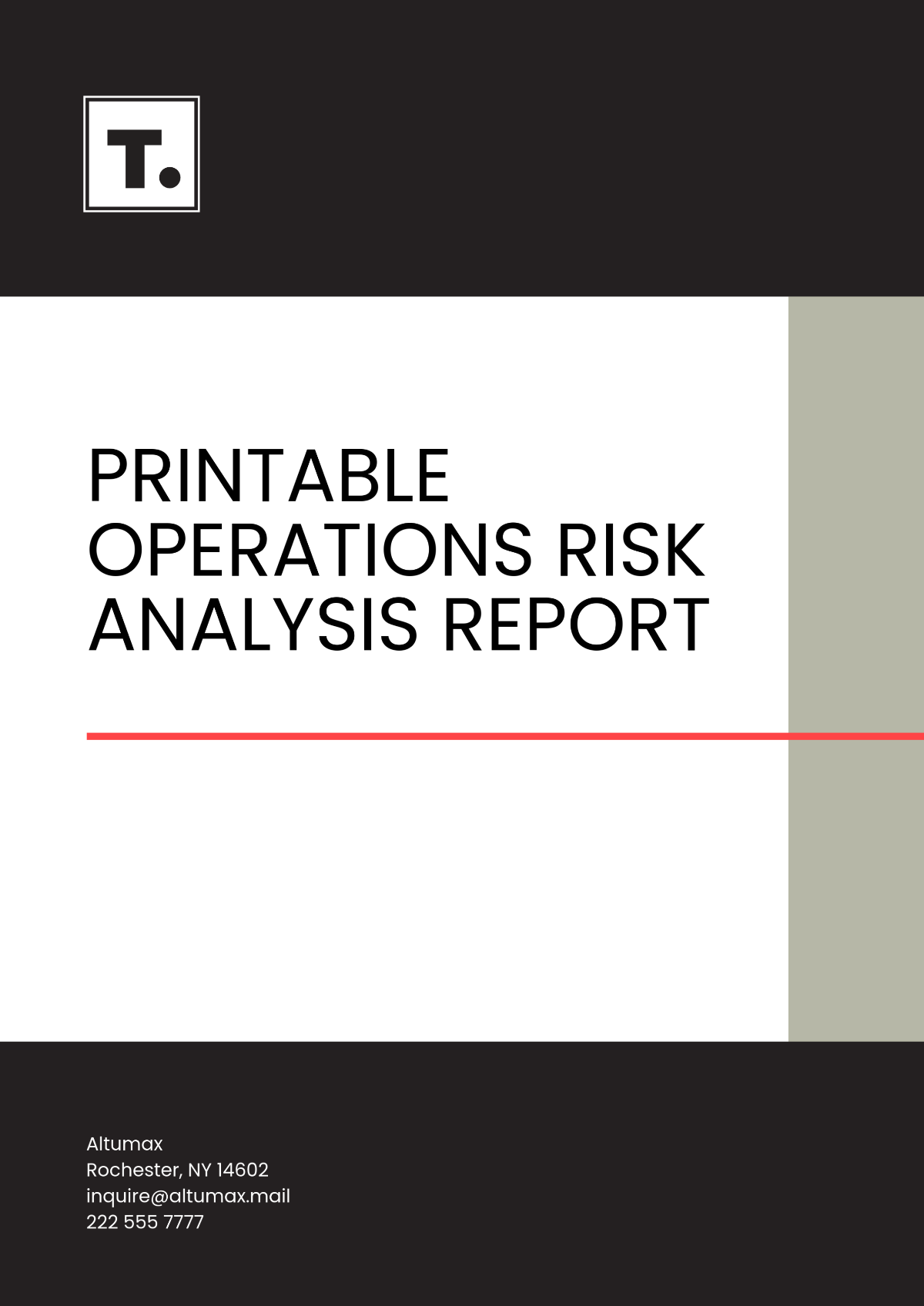Free Cafe Impact Analysis
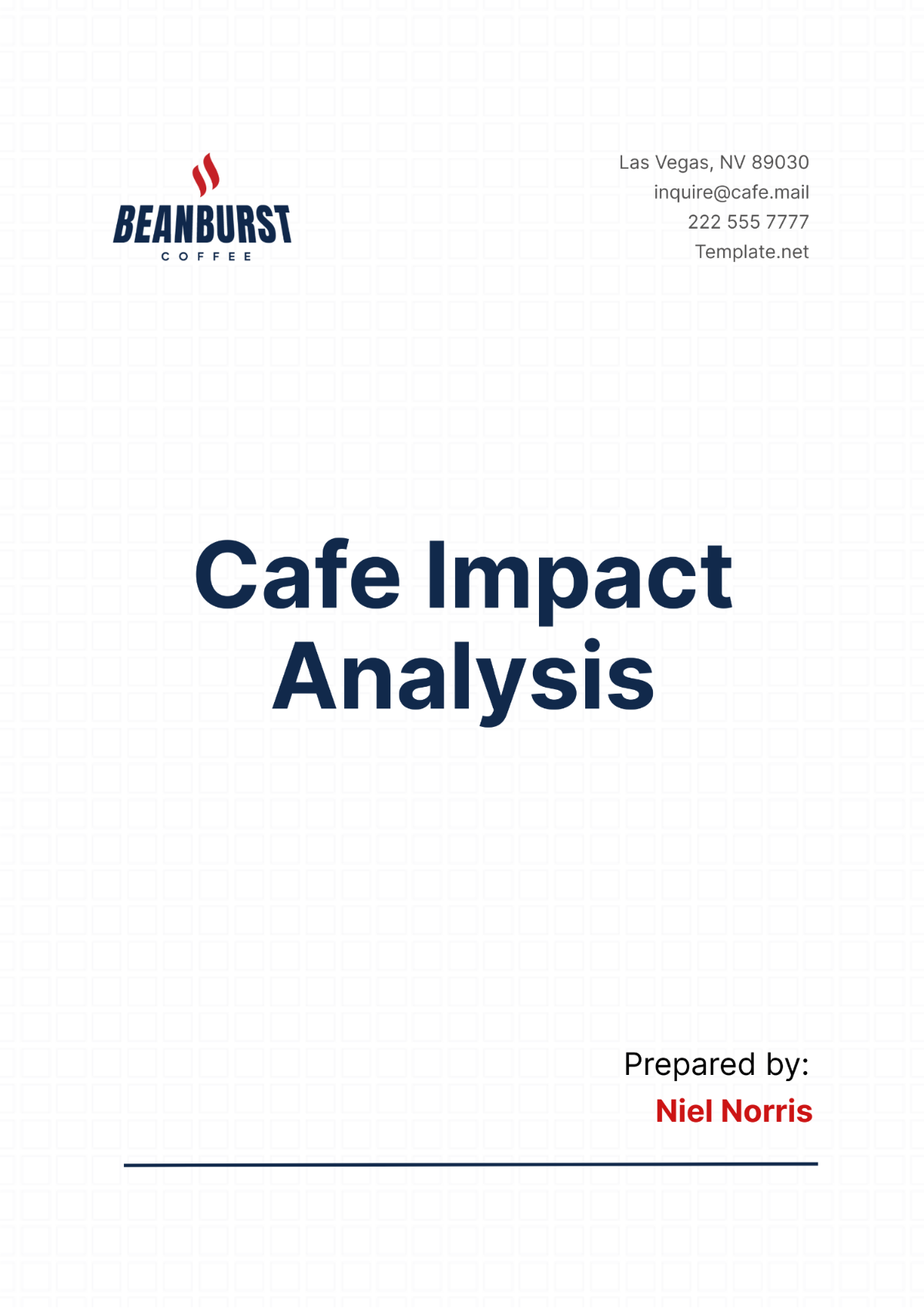
- 100% Customizable, free editor
- Access 1 Million+ Templates, photo’s & graphics
- Download or share as a template
- Click and replace photos, graphics, text, backgrounds
- Resize, crop, AI write & more
- Access advanced editor
Analyze your cafe's impact effectively with the Cafe Impact Analysis Template from Template.net. This editable and customizable template helps you assess and understand your business's influence. Editable in our Ai Editor Tool, it provides a user-friendly experience, making it easy to customize to your specific requirements. Evaluate your impact with this comprehensive template.
You may also like
Cafe Impact Analysis
I. Executive Summary
The café impact analysis highlights several key findings that underscore [Your Company Name]'s significance in its local community. Firstly, the café serves as a social hub, fostering a sense of community and providing a gathering space for residents. This has led to increased social interactions and a stronger sense of belonging among patrons.
Secondly, [Your Company Name] has had a positive economic impact, contributing to local employment and supporting other businesses in the area. Through its operations, the café has helped stimulate economic activity and growth in the community.
Lastly, [Your Company Name] has made strides in sustainability, implementing practices that reduce its environmental footprint. This includes using recyclable materials, sourcing local and organic ingredients, and minimizing food waste.
Based on these findings, several recommendations are proposed to further enhance [Your Company Name]'s impact. These include expanding community engagement efforts, exploring partnerships with local businesses, and continuing to prioritize sustainability practices.
II. Introduction
The purpose of this impact analysis is to evaluate the comprehensive influence of [Your Company Name] on the local community, economy, and environment. This study aims to highlight the multifaceted role of the café in fostering community engagement, supporting local economic growth, and promoting sustainable practices. By assessing these aspects, we seek to understand how [Your Company Name] contributes to the well-being and development of its surroundings and identify potential areas for improvement and growth.
[Your Company Name] is a well-established café located in [Your Company Address], known for its high-quality food and beverages and its welcoming, community-oriented atmosphere. Over the years, the café has become a popular destination for local residents, tourists, and professionals, serving as a social hub and a key player in the local economy. The café’s commitment to sustainability and community engagement has further cemented its role as a valuable asset to the area.
This impact analysis covers the period from [Month Day, Year] to [Month Day, Year] and incorporates both qualitative and quantitative metrics to provide a comprehensive evaluation. The study encompasses three primary areas of impact:
Economic
Community
Environmental
Economic impact focuses on job creation, support for local suppliers, and overall economic activity. Community impact examines the café’s role as a social hub and its contributions to local culture and social dynamics. Environmental impact assesses sustainability initiatives, including waste management and the sourcing of sustainable ingredients.
Through this analysis, we aim to provide [Your Company Name] with actionable insights to enhance its positive contributions and address any areas of concern, ensuring the café continues to thrive as a beneficial presence within its community.
III. Methodology
This section outlines the methodologies employed in the analysis of [Your Company Name]'s impact. A rigorous and systematic approach was taken to ensure the reliability and validity of the findings. The methodologies include detailed data collection methods, diverse analysis techniques, and specific tools used to gather and interpret data. By leveraging both qualitative and quantitative methods, we aimed to provide a holistic view of the café's influence on the community, economy, and environment.
A. Data Collection
Accurate and reliable data collection is the cornerstone of this impact analysis. This subsection details the diverse methods employed to gather relevant data, ensuring a well-rounded evaluation of [Your Company Name]'s influence on various aspects of the community.
Surveys
Surveys were conducted with [0] local residents to gather quantitative data on community engagement and satisfaction with [Your Company Name]. The survey included questions on frequency of visits, perceptions of the café’s role in the community, and overall satisfaction with the services provided.
Interviews
In-depth interviews were conducted with key stakeholders, including employees, suppliers, local business owners, and community leaders. These interviews provided qualitative insights into the café's social and economic influence, as well as its environmental practices. The interviews were semi-structured, allowing for open-ended responses and in-depth discussions.
Economic Data Analysis
Economic data was analyzed from sources such as local business reports, government statistics, and financial records of [Your Company Name]. This data helped assess the café's contributions to local employment, revenue generation, and economic activity within the community.
B. Analysis Techniques
The gathered data was meticulously analyzed using a variety of techniques to derive meaningful insights. This subsection outlines the specific analysis methods employed to evaluate the qualitative and quantitative data, ensuring a thorough examination of the café’s impact.
Statistical Analysis
Statistical analysis was used to interpret the survey data. This involved calculating descriptive statistics such as mean, median, and standard deviation, as well as conducting inferential statistics to identify trends, correlations, and significant differences in responses.
Comparative Analysis
Comparative analysis was employed to evaluate [Your Company Name]’s economic impact relative to other local businesses. This involved comparing financial performance, employment figures, and community engagement levels to benchmark the café's contributions against similar establishments in the area.
Qualitative Data Coding
Qualitative data coding was applied to the interview transcripts. This involved categorizing responses into themes and patterns to provide deeper insights into the café’s social and environmental influence. Coding helped identify common issues, strengths, and areas for improvement as perceived by the stakeholders.
These methodologies ensured a robust and comprehensive assessment of [Your Company Name]'s impact, providing a detailed understanding of its role and contributions to the local community, economy, and environment.
IV. Findings
This section presents the findings of the impact analysis, categorized into economic, social, and environmental impacts. Each sub-section provides a detailed evaluation of [Your Company Name]’s contributions and practices, supported by quantitative data and qualitative insights. Tables and bullet points are used for clarity and ease of understanding.
A. Economic Impact
Evaluating the café’s contribution to the local economy focuses on job creation, revenue generation, and overall economic activity. The findings highlight the café's significant role in supporting local employment and economic growth.
Economic Metric | Value |
|---|---|
Job Creation | [25] Jobs |
Revenue Generated | $[0] |
Job Creation: The café created [25] jobs, indicating its role in providing employment opportunities.
Revenue Generated: The total revenue generated by the café during the analysis period was $[500,000], reflecting its economic contribution.
B. Social Impact
Assessing the café’s role in the community and its social impact includes community engagement programs and customer satisfaction levels. The findings underscore the café’s importance as a social hub and its contributions to local social dynamics.
Community Engagement Programs: The café organized [10] community events, partnered with [5] local organizations, and supported local artists by hosting monthly art exhibits.
Customer Satisfaction: Survey results showed an [85]% overall satisfaction rate among customers, with frequent positive feedback on the welcoming atmosphere and quality of service.
C. Environmental Impact
Analyzing the café’s environmental practices and their outcomes focuses on waste reduction, energy consumption, and sustainability programs. The findings highlight the café’s commitment to sustainable practices and their effectiveness.
Waste Reduction Initiatives: The café implemented a comprehensive recycling program, resulting in a [30]% reduction in landfill waste. Composting efforts diverted [500] pounds of organic waste from the landfill.
Energy Consumption: The café installed energy-efficient lighting and appliances, reducing energy consumption by [20]%. Monthly energy usage was consistently lower than the previous year.
Sustainability Programs: The café sourced [60]% of its ingredients from local and organic suppliers and switched to biodegradable packaging materials, significantly reducing its environmental footprint.
V. SWOT Analysis
A SWOT analysis is a strategic planning tool that helps identify the Strengths, Weaknesses, Opportunities, and Threats related to a business or project. Conducting a SWOT analysis for [Your Company Name] can provide valuable insights into its current position and potential areas for improvement or growth.
Strengths | Weaknesses |
|---|---|
|
|
Opportunities | Threats |
|---|---|
|
|
By conducting a SWOT analysis, [Your Company Name] can identify key areas to capitalize on its strengths, address its weaknesses, explore new opportunities, and mitigate potential threats, ultimately enhancing its overall business strategy and performance.
VI. Recommendations
Based on the findings of the impact analysis, several recommendations are proposed to enhance [Your Company Name]'s positive impact on the local community, economy, and environment. These recommendations aim to build on the café's strengths, address its weaknesses, capitalize on opportunities, and mitigate potential threats, ultimately improving its overall performance and sustainability.
Expand Menu Offerings: To address the limited menu offerings, [Your Company Name] can consider expanding its menu to include a wider variety of options, catering to different dietary preferences and attracting a broader customer base. This could include adding more vegetarian, vegan, or gluten-free options, as well as introducing seasonal specials and locally-inspired dishes.
Enhance Sustainability Practices: Building on its commitment to sustainability, the café can further enhance its environmental impact by implementing additional waste reduction initiatives, such as composting organic waste and reducing single-use plastics. Additionally, exploring opportunities to source more ingredients locally and sustainably can further reduce its carbon footprint.
Improve Online Presence: To address the limited online presence, [Your Company Name] can invest in digital marketing strategies, such as social media campaigns and online advertising, to increase its visibility and reach a wider audience. This could include promoting special events, menu updates, and sustainability efforts to engage with customers online.
Address Staffing Challenges: To mitigate staffing challenges during peak hours, the café can consider implementing flexible scheduling options, cross-training staff members, and hiring additional part-time or seasonal employees as needed. This can help ensure adequate staffing levels during busy periods and maintain a high level of customer service.
Collaborate with Local Artists: To enhance the café's atmosphere and community engagement, [Your Company Name] can collaborate with local artists to showcase their work in the café. This could include hosting art exhibits, live music performances, or other cultural events to attract customers and support local talent.
Monitor and Adapt to Consumer Trends: To address potential threats from changing consumer preferences, [Your Company Name] should closely monitor industry trends and adapt its menu offerings and marketing strategies accordingly. This could include incorporating popular trends such as plant-based options, sustainability initiatives, and online ordering for convenience.
By implementing these recommendations, [Your Company Name] can strengthen its position in the local market, enhance its impact on the community, and ensure long-term sustainability and success.
VII. Conclusion
In conclusion, the impact analysis of [Your Company Name] has provided a comprehensive understanding of its role in the local community, economy, and environment. The findings demonstrate that the café has a significant positive impact, including job creation, community engagement, and sustainable practices. However, there are areas where improvements can be made to further enhance its impact and ensure long-term success.
By implementing the recommendations outlined in this report, [Your Company Name] can capitalize on its strengths, address its weaknesses, and seize new opportunities. By expanding menu offerings, enhancing sustainability practices, improving online presence, addressing staffing challenges, collaborating with local artists, and monitoring consumer trends, the café can strengthen its position in the local market and continue to be a valued and impactful member of the community.
